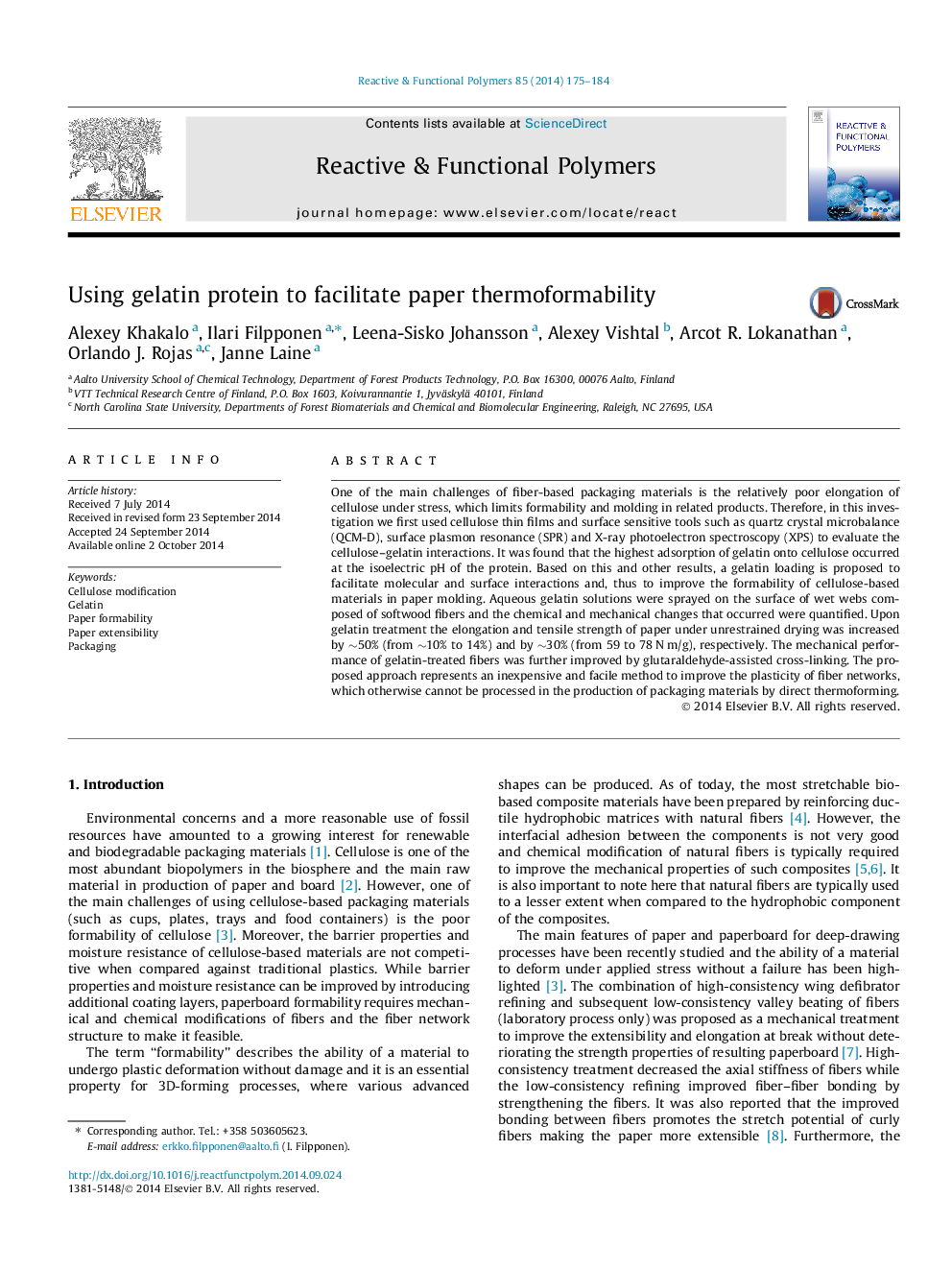| Article ID | Journal | Published Year | Pages | File Type |
|---|---|---|---|---|
| 5209786 | Reactive and Functional Polymers | 2014 | 10 Pages |
Abstract
One of the main challenges of fiber-based packaging materials is the relatively poor elongation of cellulose under stress, which limits formability and molding in related products. Therefore, in this investigation we first used cellulose thin films and surface sensitive tools such as quartz crystal microbalance (QCM-D), surface plasmon resonance (SPR) and X-ray photoelectron spectroscopy (XPS) to evaluate the cellulose-gelatin interactions. It was found that the highest adsorption of gelatin onto cellulose occurred at the isoelectric pH of the protein. Based on this and other results, a gelatin loading is proposed to facilitate molecular and surface interactions and, thus to improve the formability of cellulose-based materials in paper molding. Aqueous gelatin solutions were sprayed on the surface of wet webs composed of softwood fibers and the chemical and mechanical changes that occurred were quantified. Upon gelatin treatment the elongation and tensile strength of paper under unrestrained drying was increased by â¼50% (from â¼10% to 14%) and by â¼30% (from 59 to 78Â NÂ m/g), respectively. The mechanical performance of gelatin-treated fibers was further improved by glutaraldehyde-assisted cross-linking. The proposed approach represents an inexpensive and facile method to improve the plasticity of fiber networks, which otherwise cannot be processed in the production of packaging materials by direct thermoforming.
Related Topics
Physical Sciences and Engineering
Chemistry
Organic Chemistry
Authors
Alexey Khakalo, Ilari Filpponen, Leena-Sisko Johansson, Alexey Vishtal, Arcot R. Lokanathan, Orlando J. Rojas, Janne Laine,
